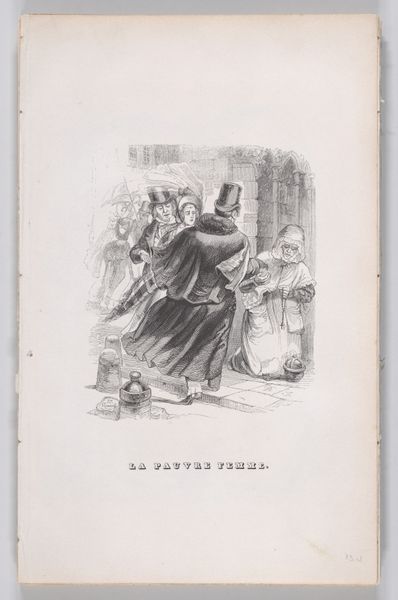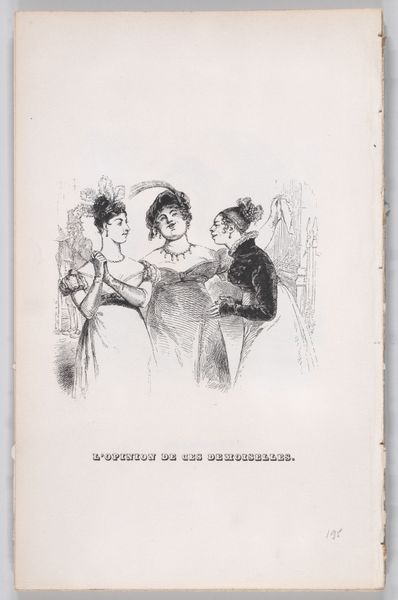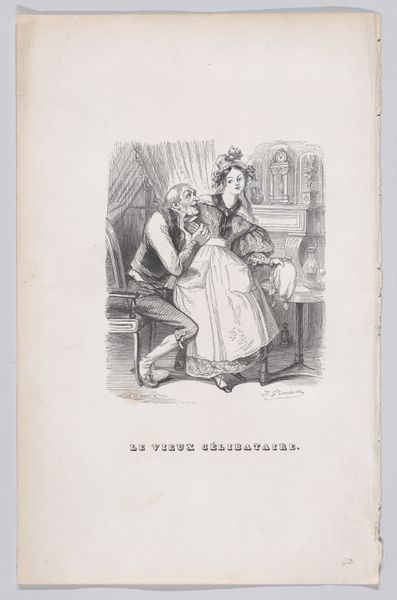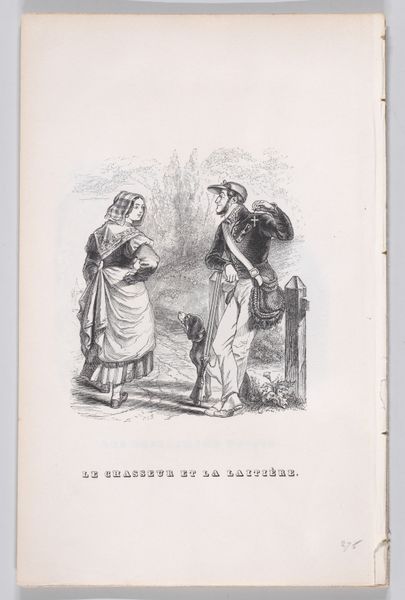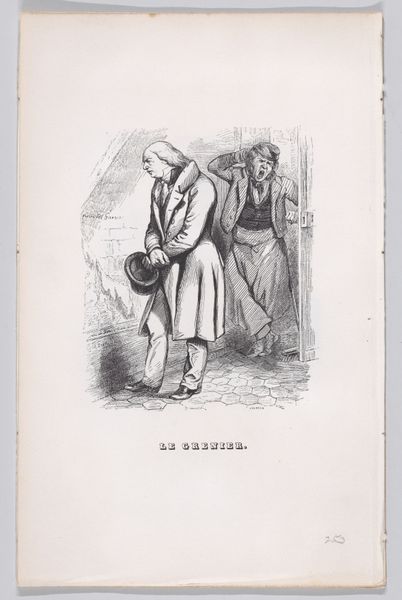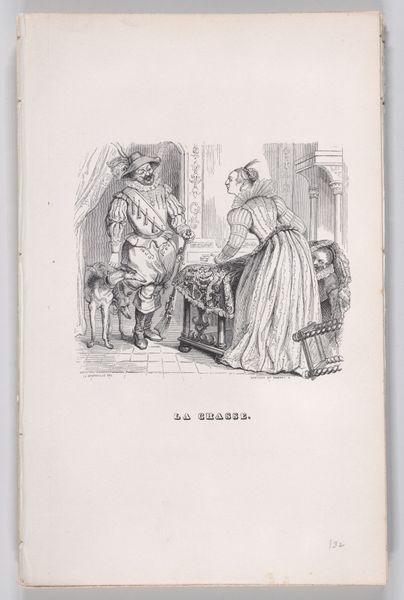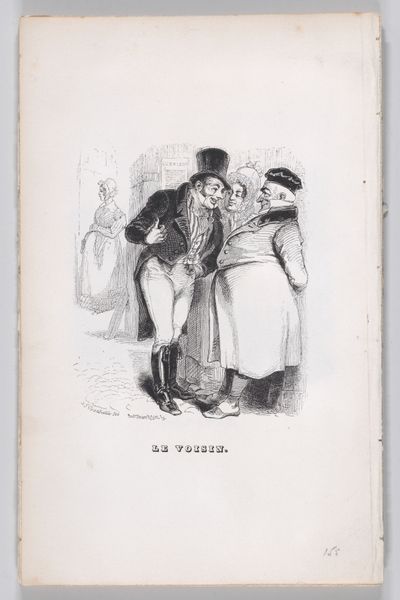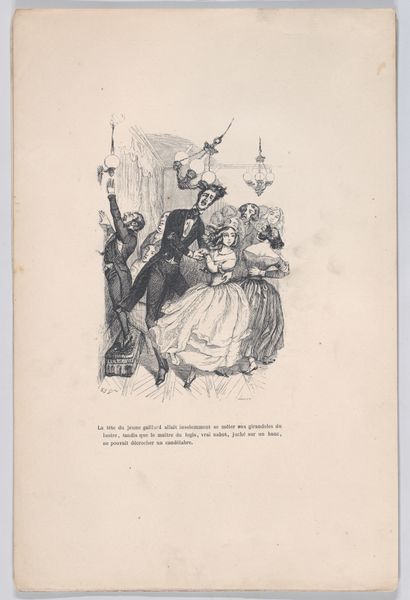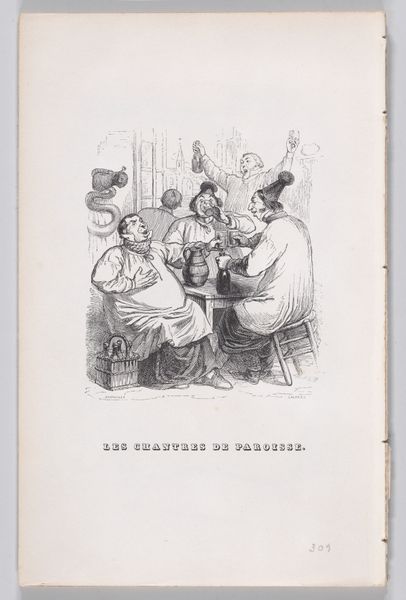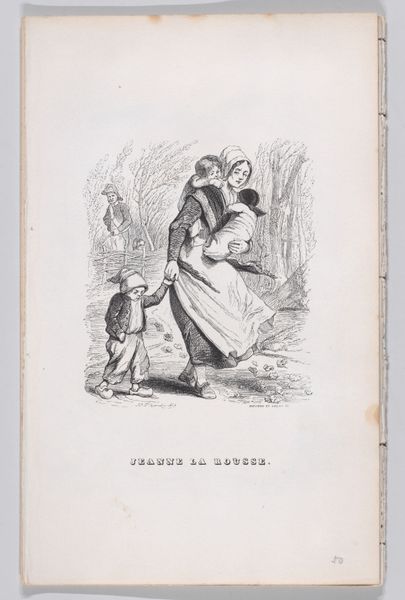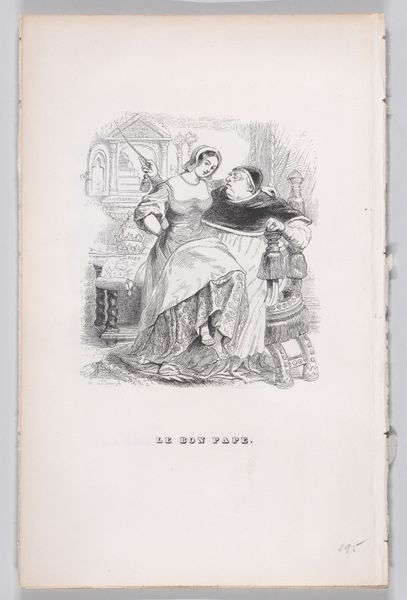
"The Third Husband" from The Complete Works of Béranger 1836
0:00
0:00
drawing, lithograph, print
#
drawing
#
narrative-art
#
lithograph
# print
#
caricature
#
figuration
#
romanticism
#
genre-painting
Dimensions: Sheet: 8 5/8 × 5 1/2 in. (21.9 × 14 cm)
Copyright: Public Domain
Curator: Here we have J.J. Grandville's "The Third Husband," a lithograph printed in 1836 as part of a series illustrating the works of Béranger. Editor: Oh, my! Talk about awkward tension frozen in time. That poor fellow looks absolutely shell-shocked, while she just emanates disdain. Curator: Indeed. Grandville's piece touches on prevalent social dynamics, specifically examining marital relations and societal expectations. We can consider this within a historical frame where gender roles were extremely rigid and patriarchal structures heavily influenced domestic life. Editor: He’s literally wearing a nightcap with what looks like… a candlestick on it? It's almost comical, the way his status seems so… reduced. Like a worn-out joke that only he’s not in on. Curator: That candlestick could symbolize enlightenment, though clearly unattainable for him within this oppressive relationship. The contrast in their stances and attire speaks volumes about power dynamics. The woman, assertive and commanding, stands in stark contrast to the cowering, diminished husband. This power play emphasizes how gender intersected with marital status, influencing social standing. Editor: It makes me wonder, what did "the third husband" do? Did he burn the souffle? Misplace her favorite poodle? Or is this about something deeper, maybe society's view of men in positions typically dominated by women? Curator: Precisely. Grandville’s caricatures served as critiques of bourgeoisie culture. This print questions normative behaviors through satire, opening discourse around domestic oppression, or perhaps the precarity of certain men. Editor: It makes me a little sad. To see it, framed like this, makes one wonder about all those silent power dynamics within closed doors. It's as relevant now, almost two centuries later. Curator: Absolutely. Examining art like this fosters conversations about how social norms and identity are performed and perceived through different intersectional lenses. Editor: Art history at its best, then – shining a light on stories still unfolding around us today, one candlestick at a time.
Comments
No comments
Be the first to comment and join the conversation on the ultimate creative platform.

